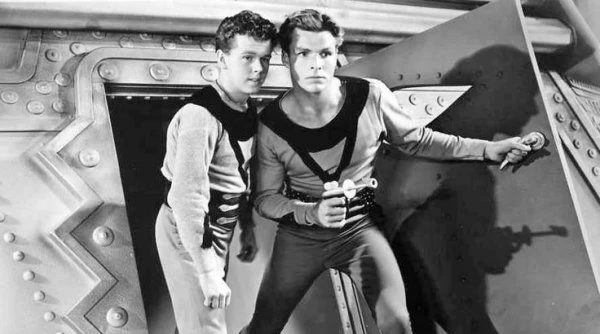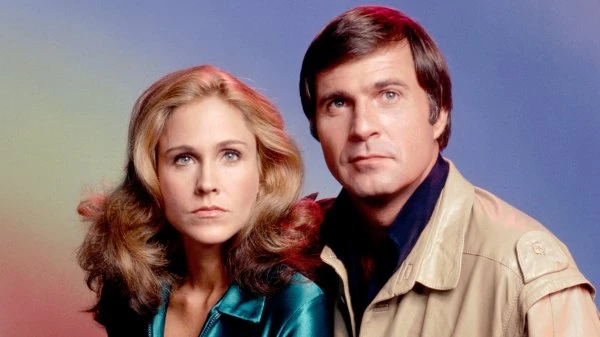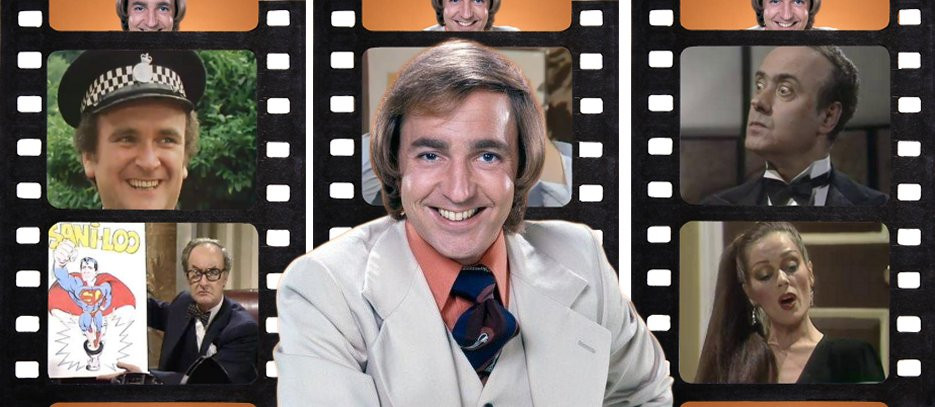
Buck Rogers in the 25th Century
1979 - United StatesMuch of Buck Rogers in the 25th Century followed Glen A Larson’s standard approach to shows
Review by Brian Slade
By the late 1980s, Glen A Larson had almost created a genre of his own on the small screen with a seemingly never-ending stream of light-hearted action dramas that the public gobbled up. But prior to his production line producing such fare as Magnum PI, The Fall Guy and Knight Rider, he had dabbled in science fiction. His first effort was with the short-lived Battlestar Galactica but then in 1979 he hit the target with the more successful Buck Rogers in the 25th Century.

By the time Larson brought his incarnation to the screen, the character of Buck Rogers had been around for half a century. The popular film series of 1939 starred Buster Crabbe, who also succeeded at playing Flash Gordon. The history of Rogers varied, with the 1939 series seeing him and a friend crashing in the Arctic, inhaling a gas that put them to sleep for 500 years. The idea of waking up in the 25th century remained in the Larson version, but the circumstances were rather different.
Just as Universal had done with Battlestar Galactica, they gambled on capitalising on the thirst for action-packed science fiction generated by the massive success of Star Wars by putting Buck Rogers in the 25th Century into cinemas. Subsequently, with some edits and reworking the movie was spliced into a two-episode pilot ahead of the full first series.
William ‘Buck’ Rogers (Gil Gerard) was sent into space in 1987 on a solo trip that concluded NASA’s deep space probe programme, but his solo flight was thrown wildly off course by an explosion that froze his life support system. Some five centuries later, his ship (Ranger 3) was found by an army and taken to the starship Draconia and Buck was restored to the land of the living.

The Draconia was on its way to Earth for a peace conference under the command of Princess Ardala (Pamela Hensley) when they found the floundering Ranger 3. Rogers was brought round and promptly sent back to Earth with a homing beacon on board as he becomes a pawn in Draconia’s plans to take over the planet. His arrival back on Earth sees him under the supervision of Colonel Wilma Deering (Erin Gray), helping defend a very different planet than the one Buck had left. Earth had suffered a nuclear war and Deering is in the higher echelons of the Earth Defense Directorate, whose job is to protect the rebuilt society.
Other allies for Buck are the wise Dr Huer (Tim O’Connor) and the obligatory robot pal Twiki (Felix Silla). Twiki had limited vocal involvement but was a permanent pal to Buck, and his phrase of ‘Biddie-biddie-biddie’ (through the vocal talents of the legendary Mel Blanc) quickly caught on with fans. Twiki was an ambuquad, and his primary role is to carry with him Dr Theopolis (Eric Server), a small circular computerised member of the Computer Council who first defended Buck on charges of treason.

The first season was chaotic. Gerard by his own admission turned down the role three times, fearing that the show would be too comical and do the same damage to his career that he perceived had been done to Adam West’s with the success of the 1960s Batman series. It is somewhat confusing then that having finally read the script at the recommendation of his agent, he decided that he did actually like the part – only to spend the first series rewriting lines that he felt too jokey and constantly looking for more substance and less flippancy in both Buck’s role and the show’s scripts.
Initial viewing figures were good, but after a gap from the airwaves mid-season, ratings began to fall away. Gerard continued his crusade for better scripts and storylines, but despite off-set upheavals in the writing room, Gerard could never get to the less shallow Buck that he was searching for.

In the second series, everything changed. Dr Huer was gone and Twiki no longer had to carry Dr Theopolis, who was replaced by a self-propelled robot called Crichton (Jeff David). Crichton had a sneer to him being somewhat disapproving of having been created by scientist Dr Goodfellow, played by British screen legend Wilfrid Hyde-White. The show itself was now set onboard the spaceship Searcher, Deering and Twiki coming along for the ride. It was a step closer to the Star Trek approach to space exploration, but audiences did not take to it, and after only thirteen episodes Buck Rogers was grounded by the network.

Much of Buck Rogers in the 25th Century followed Glen A Larson’s standard approach to shows. Universal were already riding the coattails of Star Wars, and despite the failure of Battlestar Galactica, Larson poached much of the storyline and indeed sets and crafts from that show.
Buck Rogers in the 25th Century may not have been the most original piece of television, but then that was never Glen A Larson’s style. He did produce an enjoyable piece of sci-fi that without the drastic change in direction might have lasted a little longer, even if it didn’t offer enough gravitas to compete with re-runs of Star Trek. But it was, like so many of Larson’s shows, a bit of escapist fun…and where’s the harm in that?
Seen this show? How do you rate it?
Seen this show? How do you rate it?
Published on July 4th, 2023. Written by Brian Slade for Television Heaven.










